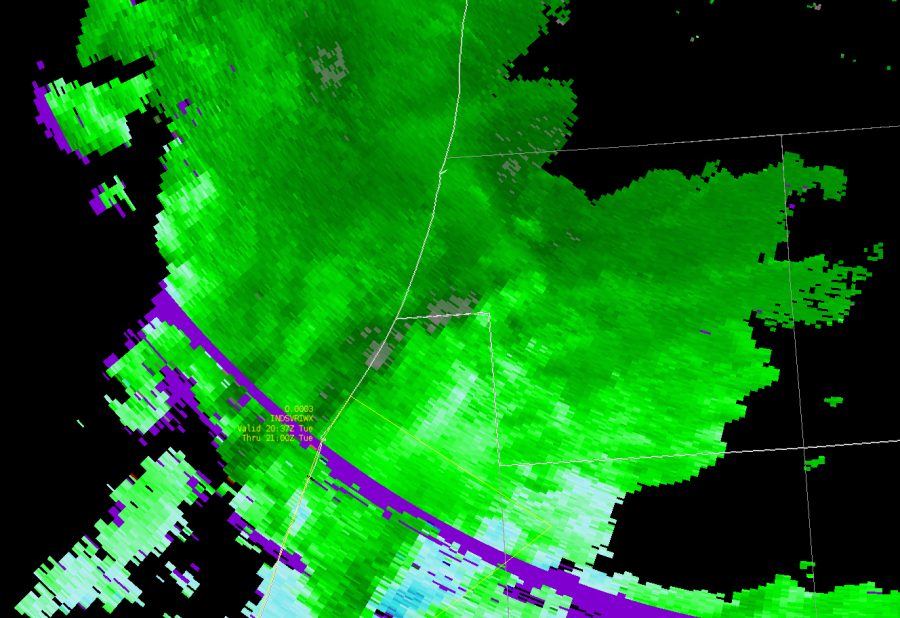I am from an inland office, so my marine experience is limited. But based on a few couplets with persistent TORP probs, went for a warning. The TORP probs helped draw my eyes to problematic areas.
AzShear and DivShear did well with the circulations out over the water. It even did well where the radar power was greatly reduced
TORP probs have been oscillating quite a bit, which hinders confidence some. However, the first few cases of the experiment TORP was more steady. Maybe these oscillations are actually more common, and the steady probabilities for Days 1 and 2 of the H.W.T. were not the normal performance of TROP?
The SRM Vrot didn’t look that great, but the combination of higher TORP probabilities along with persistent mid-level meso led me to reissue a tornado warning at 0843z near Little River, SC. The TORP and AzShear help to augment this decision. (see image below)

TORP continues to be useful for Special Marine Warning and waterspout conditions. Keep in mind, it doesn’t take as much to create problems over water than it does for land, so it is easier to have confidence. In addition, you don’t need to have a waterspout to create problems for marine, so having the marine warning out won’t result in false alarm problems like they can on land. AzShear and DivShear imagery seems to help “explain” TORP output as well. (image below).

I find it interesting that in this area of Z dropout from the tree blockage, TORP tends to increase and makes sense with the velocity data. I wonder what would happen if you removed Z and ZDR from the algorithm and only used Velocity, Sprectrum Width, and CC, and maybe KDP in the TORP learning.

This case has had the most persistent TORP probabilities above 80%. Is there something about tropical cyclones or environments that help to drive this and allow the algorithm to have higher confidence?
Here on Day 4, subjectively, this has been the most robust performance of AzShear and DivShear. Today, AzShear/DivShear signals and TORP trends have been very consistent. For example, the first storms that produce tornadoes and waterspouts had TORP with 50% or greater and had enhanced Az/Div Shear values. Subsequent tornadoes/waterspouts had very similar values. This repeat in values in the same environment helped to drastically increased confidence in these fields. These provided similar lead time to the development of notable Vrot in the V/SRM fields. Operational forecasters love persistence. And through 0938z, we have had that with the TORP and Az/Div Shear parameters.
Example below of how AzShear and TORP produced higher values, similar to previous storms, and storms behaved in the same way. This persistence increased confidence.

The increase in AzShear and TORP probs resulted in the warning issuance of at 0954z from Lumbergh. The vrot increased after the enhanced Azshear and TORP. Again, persistent behavior increasing confidence! (image below)

One thing to note, is that I am not a tropical forecast office meteorologist. I have some Great Lakes experience. Therefore, my mental conceptual model of tropical cyclone tornadoes and supercells is limited, which at first may have hindered my ability to “calibrate” TORP to what I was seeing on base products and dual-pol. However, persistent signals are a forecaster’s best friend. But I do think it is important for meteorologists using these algorithms to have a conceptual model. If you don’t apply critical thinking to these, you will be chasing after a lot of false alarms. These tools are very fascinating. But they take time to learn. The NWS currently has a paradigm where 4,000+ meteorologists are to have a baseline training in severe storms radar interrogation, as well as forecasting, hydrology, and Impact-based Decision Support Services. My fear is that if these tools (e.g. AzShear, DivShear, TORP) were to be deployed, it may get negative feedback despite positive feedback in HWT and OPG experiments prior to deployment. I feel that NSSL and the greater research community really needs to advocate for putting this work in the hands of dedicates subject matter experts in an operational environment. I think advocating for this will aid in expediting the advancement of these tools.











 -dryadiabat
-dryadiabat




































